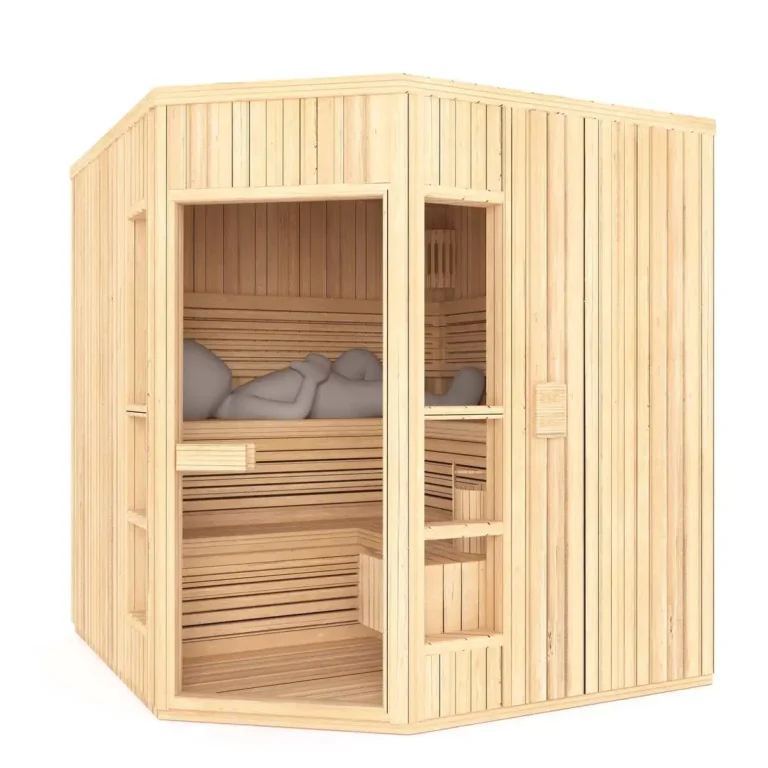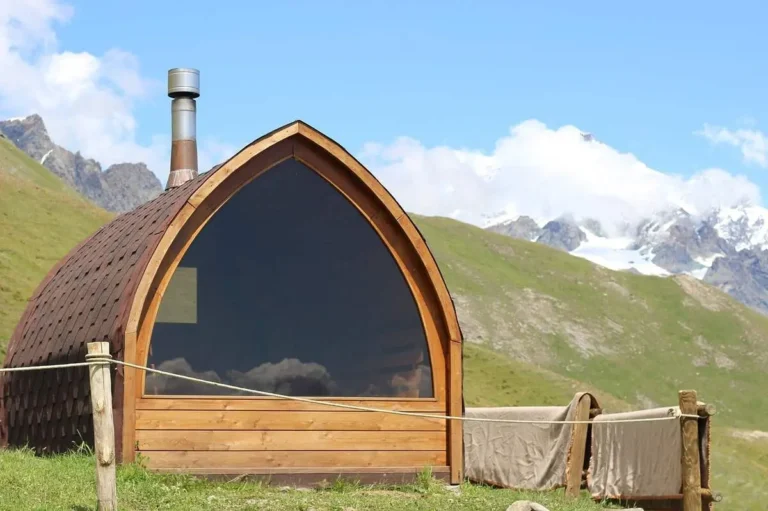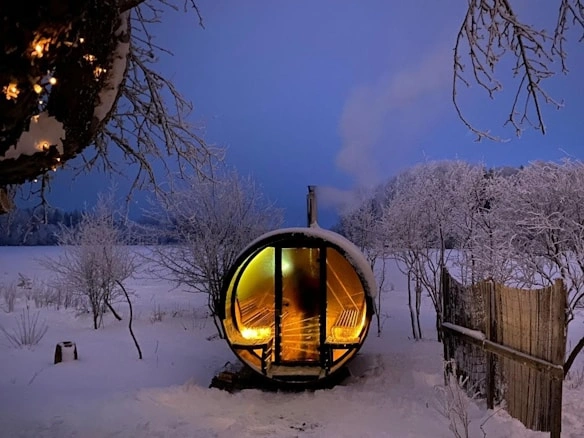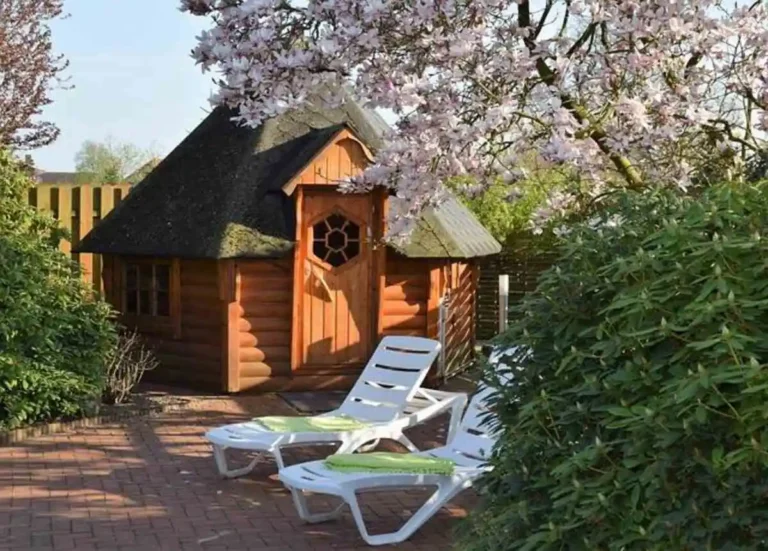How Much Does a Sauna Cost? | Comprehensive Guide to Pricing and Factors
Wondering how much does a sauna costs? Prices vary widely—prefabricated indoor saunas typically run 2,000–4,000, while high-end upgrades like water/steam generators add 1,000–2,500. Luxury features (e.g., aromatherapy) can push costs up to $5,000+. Ultimately, your total sauna cost depends on size, materials, and extras.
Custom-built or outdoor models can cost $10,000 or more. The material you choose, such as cedar or hemlock, can make a big difference in cost. Further, additions like infrared technology and more sophisticated controls are all big cost-increasers, too.
Installation costs can differ significantly. While DIY kits are available, many find the need for professionally installed units. Are you building a relaxing oasis at home or a fun party room retreat? Knowing what goes into these costs will better prepare you to plan your budget.
Let’s break down what’s included to get you matched up with the package that will best serve your needs.
How Much Does a Sauna Cost?
Sauna costs vary widely depending on type, size, and materials. On average, saunas cost between $3,000 and $6,000, the national average being around $4,500. Installation labor can run an additional $700-3,000, depending on complexity. Monthly energy costs typically total between $15 and $30. This amount can vary based on what type of sauna you have and how frequently you use it. Knowing what these costs look like will help you make the best decision possible.
1. Understand Sauna Cost Factors
Size is another important factor, with larger, custom-sized saunas using more materials and incurring higher installation costs. For instance, a two-person model may be priced from $1,500, while a four-person version might be over $5,000. Traditional saunas usually end up being more expensive to install and operate than an infrared sauna, so sauna type makes a difference, too.
Hardwoods such as cedar or redwood make a difference in cost, with premium materials adding to durability while raising the overall cost. Finally, the type of heater—electric, infrared, or wood-burning—affects upfront costs and monthly energy costs. Electric heaters, for instance, use 3 kW to 9 kW, which can add up over time, whereas infrared heaters are more energy-efficient, averaging 1.5 kW to 6 kW.
2. Explore Traditional Sauna Costs
Additionally, traditional saunas are generally more expensive than other types. So do kits that run from $5,000 up to more than $15,000, with installation costing another $5,000. Their heavy-duty construction, paired with high-quality materials used, tends to make up for the cost.
For example, with cedar saunas, the protective oils make them last longer, and they actually retain heat better. While traditional saunas have higher operating costs, about $30 to $50 monthly, they offer a timeless experience that many find worth the expense.
3. Analyze Infrared Sauna Prices
Infrared saunas are cheaper, costing between $1,500 and $6,900. Models on the smaller side with minimal amenities are at the lower end of the range, while larger, more high-tech models bring up the price. Their energy efficiency is probably their biggest benefit, with operating costs averaging $10-15 per month.
Plus, they do wonders for your health, from improving circulation to relaxing muscles. Added to that low price, this makes them an attractive option for all but the wealthiest buyers.
Key Factors Influencing Sauna Prices
Understanding the cost of a sauna involves examining several key factors, including its size, materials, heating system, and installation requirements. All of these components are integral pieces that factor into the general pricing. Moreover, additional characteristics and market fluctuations can heavily affect the overall price.
Sauna Size and Capacity
Saunas tend to be priced based on size, and sauna size has a major impact on the overall cost. Saunas that are designed for one or two people will be less expensive, with basic models starting at about $2,000. A larger sauna that accommodates four or more people might begin around $8,000. The price adds up, particularly if you’re looking for cutting-edge options such as ergonomic seating or chromotherapy lighting.
Getting the right size not only provides the optimal sauna experience but also helps accommodate everyone in your household properly. A compact infrared sauna works best for personal relaxation seekers. Conversely, a four-person barrel sauna works best if you have a family or enjoy hosting small gatherings. Increasing capacity can increase usability, but it increases cost and space requirements.
Material Choices and Their Costs
The sauna material influences both price and longevity. Cedar and hemlock are the wood choices, which can run anywhere from $2,000 to $7,000 based on size and where they’re installed. Cedar has natural resistance to moisture, giving it a long lifespan with very little maintenance. Hemlock is known for its modern, smooth finish.
Value—not just cost—matters. Trade-offs between cost and quality are key. Less expensive materials can save money at first ,but could need more ongoing care in the future. Climate and environmental considerations, like the use of sustainably harvested wood, might weigh into your decision.
Heating System Types and Price
The type of heating system used is the second biggest cost driver. Electric heaters, priced between $800 and $3,000, are efficient for most setups, while wood-burning stoves range from $1,000 to $3,000, adding a traditional aesthetic. Infrared heaters, priced from $500 to $2,000, are also an option.
As the most energy-efficient heater type, infrared heaters are only found in smaller saunas. If you’re considering a larger heater with higher wattage, your upfront costs will be higher, but heating efficiency will be improved for larger spaces.
Sauna Types and Associated Costs
Sauna types by cost and features. Here’s a detailed breakdown of three common types.
Traditional Dry Saunas: Price Breakdown
In traditional dry saunas, the air is heated to temperatures that, in turn, warm your body. For residential installations, they typically range from $2,000- $6,000. High-end models made from premium wood and other materials, and covering the latest tech features, can go over $10,000.
These saunas run between 185–190°F, making for a truly intense and immersive experience. We find that the increased cost is usually due to high construction materials such as cedar or hemlock. The heating system could require a good deal of additional power.
With benefits like improved circulation, muscle relaxation, and detoxification, it’s no wonder they’re a go-to treatment for wellness aficionados. Operating costs are comparatively low, with most users spending anywhere from $25–$50 a month, depending on energy costs and frequency of use.
While initial costs might be higher than other types, traditional saunas provide long-term value due to their longevity and proven health benefits.
Wood-Burning Saunas: Cost Analysis
Wood-burning saunas offer an old-world charm and authentic experience, typically costing between $3,000 and $7,000. The natural heat and aroma of burning wood enhance relaxation, but ongoing fuel costs and regular maintenance like chimney cleaning add to overall expenses.
Portable saunas are perfect for outdoor accommodations where electric power could be an issue. Electric saunas are low maintenance, which adds to their convenience.
Wood-burning models offer warmth and character that entice buyers seeking an authentic sauna experience.
Infrared Saunas: Expense Overview
Infrared saunas, which cost between $3,000 and $10,000, use infrared radiation to heat the body directly. They use infrared heaters which are gentler than traditional heaters and operate at a lower maximum temperature of 150°F.
This energy-efficient design runs for about 15 cents per hour. They help relieve joint pain and stress. They cost less to produce, and investing in them is money you save on future energy bills, most notably when compared to more conventional sources.
DIY vs. Professional Sauna Installation
Ultimately, whether you go with a DIY sauna project or contract an installer comes down to your budget, skill level, and vision. Each option presents unique benefits and obstacles, which can affect total cost and experience.
Cost of Self-Installation
By wiring and plumbing the sauna yourself, you can save thousands. A DIY sauna is often 30–40% cheaper than purchasing a pre-built model, and if you’re confident in your skills, you could save up to 50% compared to hiring a professional.
Curious how much a sauna costs? Basic DIY sauna kits start at just a few hundred dollars, while larger or luxury setups can cost thousands. Keep in mind—high-end builds require tools (saws, drills, levels) and patience for step-by-step assembly. Your total sauna cost depends on size, complexity, and DIY skills.
A sauna kit that is 4 by 6 feet works comfortably for 2 to 3 people. If you need something bigger, an 8×12 foot kit will fit more than 8 people easily. Note that DIY installation is at least 15–25 hours of labor, depending on how complex the project is.
Hiring a Contractor: Price Points
The overall cost, with installation, will typically be between $5,000 and $10,000 as professionals will need to frame, insulate, and finish the unit. Hiring a sauna contractor comes with the benefit of their expertise.
They guarantee high-quality installation and direct you away from expensive errors that might incur even heftier repair costs. Contractor rates vary significantly depending on their location and the complexity of the project.
When hiring a pro, seek out credentials, check reviews, and look for experience with sauna installations.
Permits and Inspections: Budget Accordingly
Before you begin, review relevant local regulations. Permits may require additional budget considerations and inspections will be necessary to ensure all installations will pass safety codes.
All of these steps have a major impact on both price and time. Common permits you may need include electrical and structural, which will depend on your particular setup and where you live.
Ongoing Sauna Expenses
We’ll dive into the continuing costs of sauna ownership that start after you buy and install your sauna. Knowing these expenses upfront can help you budget more effectively and ensure your sauna remains a relaxing and worthwhile investment.
Some of the major opex factors to focus on are energy usage, maintenance and repairs, and water costs.
Energy Consumption and Costs
The energy used to run a sauna is one of the most important ongoing expenses to consider. Compared to traditional electric saunas, which generally use 6 to 8 kWh per session, this use can translate into monthly energy costs of $20-$30, or higher, depending on how often you use it and your local cost of electricity.
For a 2-person sauna, anticipate ongoing costs of around $25 to $50 per month. If you choose a bigger model, especially a 6-person sauna operating for 12 hours per day, your monthly expense might be about $86.
Infrared saunas, on the other hand, are much more energy-efficient, with some models costing under $5 per month to run. To maximize energy savings, opt for energy-efficient machines and keep your sessions short. Reduce costs by using your sauna as much as you can during off-peak electricity hours.
Maintenance and Repair Budget
Maintenance is a huge consideration. Annual maintenance expenses vary widely. They can range from $0 all the way up to a few hundred dollars. It really depends on your sauna size, features, and power rating.
Routine inspections, like checking and replacing heating elements if they are starting to wear or cleaning wood surfaces to remove built-up particles, can avoid more expensive repairs. Neglecting maintenance can result in more permanent and costly damage, such as damaged heaters or wood paneling, which usually would need professional repair.
Typical repairs, like replacing a heating element, run from $100 to $300. It’s a good idea to earmark money for unforeseen fixes.
Water and Plumbing Considerations
If your sauna needs to be plumbed, installation costs for your sauna to have a proper water supply and drainage can really increase expenses. Making sure that plumbing stays efficient and prevents damaging water leaks can lead to higher maintenance costs.
Preventative measures, such as regularly checking for leaks and making sure the field drains properly will keep long-term costs low.
How to Save Money on Your Cost
Saunas are a wonderful thing to add to your home, and can be very beneficial, but they don’t have to cost you an arm and a leg. With some strategic planning, you can reap all the pain-relieving and stress-melting rewards of a sauna, and do it without spending a fortune. Here’s what you need to know to do it.
Choose Budget-Friendly Materials
Choosing inexpensive materials is the quickest and simplest way to cut costs. Recycled or reclaimed wood, like cedar or spruce, saves trees and is budget-friendly. Quality substitutes such as hemlock or fir offer long-lasting performance without the hefty costs.
Material selection impacts not only the initial cost, but long-term costs as well, including maintenance. Certain types of wood require regular application of protective treatments to stop warping. Some others do so organically against moisture and heat.
Opt for a Smaller Sauna Size
Reducing the size of your sauna can make a big impact on the purchase price and the cost of operation. More efficient with compact designs, fewer materials are used, and they take less energy to heat.
For example, a 2-person infrared sauna usually costs between $25-$50 a month to operate. All that said, they still provide an intimate and powerful sauna heat experience.
To ensure the best possible experience, look into ergonomic benches or other adjustable seating options to get the most out of the little space available.
Forego Unnecessary Extras
Omitting non-essential features will save even more money. Things such as built-in sound systems or chromotherapy lighting can increase costs by hundreds or even thousands of dollars.
Research the essential elements, like specific heating elements and insulation materials. A straightforward, no-frills design brings you all the relaxation and health benefits without breaking the bank.
Consider a Home Sauna Kit
With prefabricated sauna kits, installation is a breeze, slashing labor costs by 20-30%. Infrared kits run from about $1,500 to $6,000.
They are particularly alluring because they are more energy efficient and easier to install. They work great in smaller spaces and offer a sauna experience tailored to you for a small share of the cost.
Long-Term Value of Owning a Sauna
Owning a sauna is an investment that pays dividends beyond individual enjoyment. With all the health benefits, relaxation opportunities, and even potential financial gains, a sauna is a practical addition for many long-term homeowners.
Health and Wellness Benefits
Your regular sauna sessions will do wonders through their cumulative effects to enhance your health. The heat stimulates blood circulation, which benefits heart health and aids in speeding muscle recovery after workouts.
Saunas improve detoxification. Sweating induced through sauna use can help remove fat-soluble toxins like heavy metals from the body.
In addition to physical health, saunas improve mental health. Taking time to go to a sauna transports you away from the stressors of everyday life. It induces a meditative-like state in which cortisol levels can decrease.
This relaxation response can lead to better sleep and decreased anxiety, among other benefits. If you need to maintain your wellness routine on the go, saunas may be the answer. They pack a powerful blend of mind and body wellness benefits.
Home Resale Value Considerations
Adding a sauna to your home can increase its appeal in the real estate market. More and more buyers are looking at saunas as a great home-buying advantage, reinforcing a wellness and luxury-centered home.
This can improve your property’s long-term value, particularly if you’re in a location where demand for health-related amenities is on the rise. The return on investment for a sauna installation varies, but homes with unique features like saunas often attract more attention.
If resale value is a top consideration, keep your sauna clean and in a place where there is minimal disruption to the home’s design. Promoting energy-efficient features like infrared heaters that use less electricity can give green-minded buyers one more reason to bite.
Relaxation and Stress Reduction
The fifth benefit of owning a sauna is relaxation. Saunas are fantastic tools to foster an environment of relaxation. The soothing heat helps to release tension in muscles and induces a feeling of relaxation.
Creating an atmosphere is also important. A sauna with warm, inviting light and comfortable seating with good back support is key to enjoying your space to the fullest.
Financing and Incentives
Your dream of owning a sauna is within everyone’s reach! Financing options and prospective incentives further reduce the financial burden. For most people, these solutions combine to make it feasible to welcome a high-quality sauna into their home. GoodHealth Saunas (GHS) makes choices affordable, too!
Available Financing Options
Financing gives you a flexible new way to pay for your sauna. For instance, many sauna providers, including Finnish Sauna Builders, partner with financing platforms like Bread to provide low-interest loans and installment plans. You can finance the cost of owning a sauna with affordable monthly payments.
Saunas usually cost anywhere from $5,000 to $10,000, so this is an affordable option that fits your lifestyle. These payment plans provide an easy-to-understand structure that may make budgeting easier, all while preventing the shock of a big initial cost.
At GHS, we’re proud to make wellness accessible by combining financing with competitive pricing and a lifetime warranty, ensuring long-lasting value for your investment. As you compare offers, keep an eye out for terms such as fixed rates and no prepayment penalties, which can help protect you from hidden costs.
Shopping around with various lenders helps you obtain the best possible terms, suited to your unique financial needs.
Rebates and Incentive Programs
Additionally, more energy-efficient sauna models often qualify for rebates or other incentives, allowing you to significantly decrease the upfront cost. These programs encourage greener options, in line with the increasing trend toward sustainable home upgrades.
Begin by looking up your local and state programs that incentivize wellness or energy efficiency investments. For instance, energy-efficient installations like insulation should be fully covered by rebates, reducing the effective purchase price and making it more affordable to own.
Be aware of what eligibility criteria need to be satisfied when applying for a project incentive. This means requiring third-party documentation for energy ratings and proof of purchase. Understanding these options can lead to some substantial savings, making your sauna an even more savvy investment.
Conclusion
A sauna is a worthwhile investment in both your health and your home. There’s an option to accommodate almost any budget, as the cost will vary based on the type, size, and installation method. Whether you want a small infrared model or a custom-built traditional sauna, you have options. Fortunately, either option comes with tons of affordable options to let you reap the benefits without spending a fortune. The maintenance is pretty straightforward, and the long-term benefits, such as relaxation, improved general wellness, and even energy savings in some cases, far outweigh that.
Consider your choices, shop around, get estimates, and learn about financing if necessary. Owning a sauna can seem like a daunting and expensive task. Plan your sauna today, and before you know it, you’ll have the perfect place to relax and rejuvenate safely at home.







